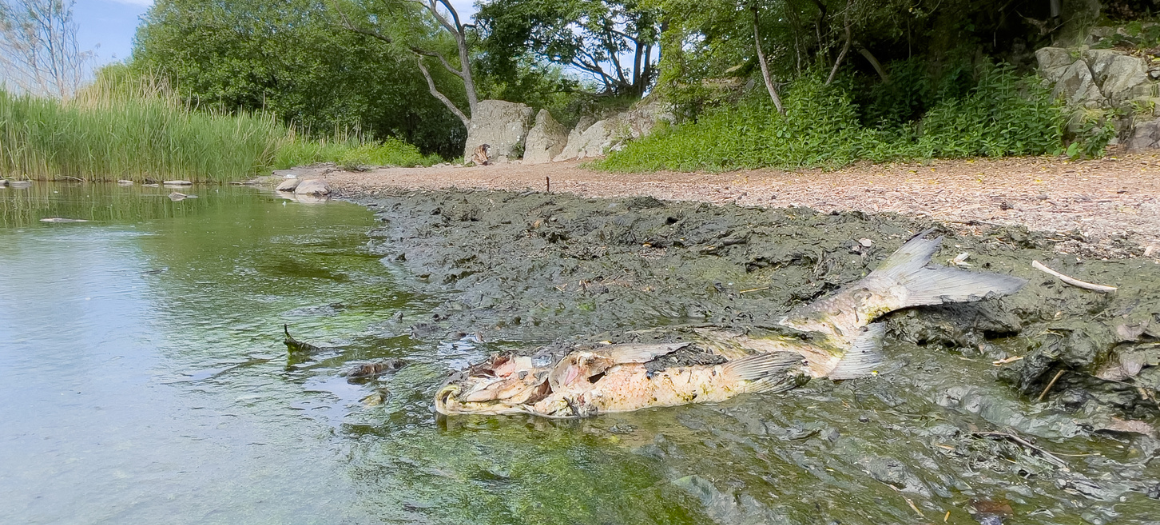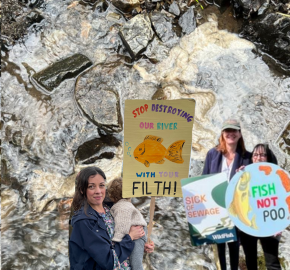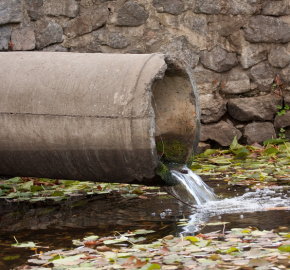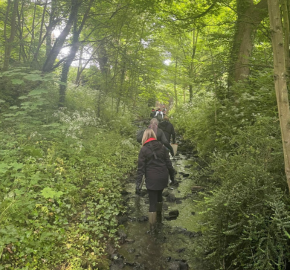Windermere: citizen scientists take action to fill the ‘monitoring void’ left by an absent regulator

© Matt Staniek. The image shows Waterhead which is situated on the northern shoreline of Windermere. According to the Big Windermere Survey, the sites in this area received either a Poor or Bad phosphorous status.
With the Environment Agency’s budget slashed in half since 2010, regulatory monitoring has rapidly declined.
Monitoring of water quality in freshwater environments has reduced significantly over that time, leaving sizeable gaps in the Environment Agency’s records. In response, we have seen a rise in concerned citizen scientists, whose data collection, is being used to fill in the gaps and instigate the local Environment Agency into taking action.
Citizen science in action
The Big Windermere Survey, launched by the Freshwater Biological Association (FBA) and Lancaster University, is an example of the importance of citizen science in generating valuable water quality data.
Over 100 members of the local community contributed to the collection of data. The sheer number of volunteers involved and sites covered is notable and has provided a valuable record of water quality across the Windermere region.
We have already begun analysing the data, produced from the survey, to improve our understanding of water quality in the lake and connecting waterbodies.
Just half of all Windermere lake sites achieve a ‘good status’ for phosphorous
From the data, we can see that a large proportion of sites are suffering from elevated phosphorous. Only 52% of all lake sites achieve a Good status for total phosphorous. On Lake Windermere’s shoreline, 42% of sites failed to meet Good status, with 17%, limited to Poor and Bad status.
A sample taken from the River Brathay failed to achieve Good status, due to elevated phosphorous concentrations. This sample was taken approximately 500m downstream from the sewage discharge outlet of United Utilities’ Langdale Wastewater Treatment Works. When compared with the other 92 samples, taken across the region, this elevation appears irregular. However, when only considering samples, taken just downstream of United Utilities’ infrastructure, elevations in phosphorus start to become far more regular.
In fact, 60% of all samples with total phosphorous equal to, or above, 0.05mg/L were located directly downstream of sewage-related infrastructure. Site ‘L105’ had the highest recording for total phosphorous at 0.1mg/L. The sample was collected just over 500m downstream from United Utilities’ Greenodd Pumping Station. The storm overflow, at this facility, discharged untreated sewage for 676 hours in 2021.
We are currently looking into two sites, where data is unable to be obtained from the survey, both being the first downstream site from Grasmere Wastewater Treatment Works and Langdale Wastewater Treatment Works.
Locals and tourists will both be concerned that Fell Foot’s designated bathing water site failed to achieve Good status, as a result of elevated E. coli in the collected water sample.
Data limitations
Site selection
We have been disappointed by the lack of sites positioned directly downstream from local sewage treatment works given around 40% of the phosphate entering Windermere is from treated effluent and storm overflows. It would be a worry if United Utilities’ involvement in this survey extended beyond purely financing the project.
Next year’s survey should look to fill this gap. As it stands, there is still a demand for additional monitoring at these sites.
Publicly available data
We are pleased to see that the Big Windermere Survey is open access, like our own SmartRivers monitoring scheme.
Sadly, we have not found United Utilities to be as transparent and open when sharing its own data. United Utilities continues to block our access to information about their works and discharges into Windermere and connecting waterbodies.
A failing regulatory system
Once again, it is disappointing that the task of water quality monitoring should have to fall on members of the general public. That said, it is hugely empowering to see a community taking action to understand the health of their local waterbodies. The data collected by these citizen scientists has highlighted several areas where water quality must be improved.
It is vitally important that we continue to provide support for those invested in the health of Windermere and its connecting waterbodies. We are working in collaboration with Matt Staniek, Director of Windermere Lake Recovery CIC, to make this happen. Together, we will strive to gain a clearer picture of the situation in Windermere and apply pressure on those that threaten to degrade its health even further.





Are your figures for Phosphate in your article correct. In the Cambridgeshire fen rivers we would love to have levels that low. We regularly get levels in whole numbers 1.25 – 3.0 mg/L. Most of the local WRC have discharge permits set at 2.5mg/L